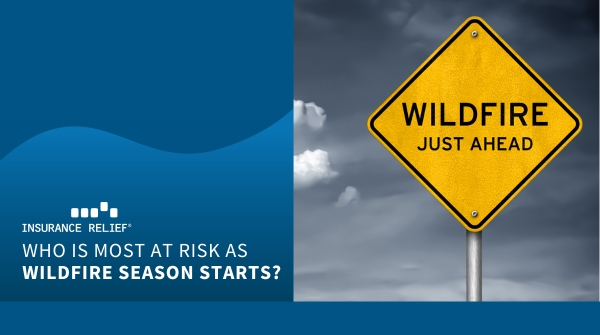Who is Most at Risk as Wildfire Season Starts?

During wildfire season, certain areas are particularly vulnerable due to their location and the lack of adequate insurance coverage. These factors combine to create a perfect storm of risks that can have devastating consequences for individuals and communities.
High-Risk Locations
Location plays a crucial role in determining the susceptibility of an area to wildfires. Regions with dry climates, abundant vegetation, and proximity to forests or grasslands are more prone to wildfires. This includes areas such as California, Texas, and Florida. These locations experience conditions that are conducive for wildfires to ignite and spread rapidly.
A lack of firefighting resources and severe drought conditions are increasing the risk even more. Since around 1900, the climate in the western United States has warmed by two degrees Celsius. These conditions have led to very low water levels in reservoirs. Moreover, the fire season is now three months longer.
Even within these high-risk regions, certain areas are at greater risk due to their specific geographical features. For example, neighborhoods nestled in mountainous regions or near densely forested areas face higher risks because wildfires can quickly engulf these areas, making it challenging for residents to evacuate in time. Also, areas located near canyons or ravines may experience an increased risk of fire spreading due to the wind patterns and natural channels that facilitate the rapid spread of flames.
Underinsured
Another critical factor increasing the vulnerability of these at-risk areas is being underinsured. Many property owners, whether due to financial constraints or lack of awareness, fail to obtain sufficient insurance coverage for their homes and belongings. This leaves them ill-prepared to recover from the extensive damage caused by wildfires. In the aftermath of a devastating fire, those without adequate insurance may struggle to rebuild their lives, facing financial burdens that can be overwhelming and long-lasting.
Underinsurance not only affects individuals but also impacts the community as a whole. When a large number of homeowners are underinsured, the recovery process becomes more arduous, slowing down the overall rebuilding efforts. The economic and social consequences can be severe, with displaced residents struggling to find suitable housing, local businesses suffering from reduced customers, and the community losing its sense of stability.
Controlling risk
To mitigate the risks associated with wildfires, it is crucial for individuals and communities to prioritize comprehensive insurance coverage. Adequate insurance can provide financial protection, ensuring that homeowners have the necessary resources to rebuild and replace their damaged property and possessions. It is essential to review insurance policies regularly, assess coverage limits, and consider additional endorsements or riders that specifically address wildfire-related risks.
If your company is growing and looking for new people, Insurance Relief can find the top-notch professionals you need.
We are one of the best in the business, winning a Best in Staffing award for our accomplishments. At Insurance Relief, we care about the people we recruit as individuals. We provide job opportunities that fit, and we treat our people with respect and fairness. Give us a call today.



